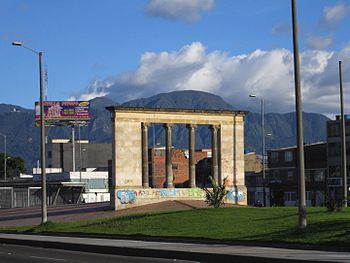After 30 years of neglect, local family house gets much needed attention.
Modern Urbanization in Bogota, Colombia.
By 1944, the rapid expansion of Bogotá towards the south reached the Puente Aranda area, the Aranda bridge was demolished to build Avenida de Las Américas, a project supported by the Colombian Society of Architects, which would join Calle 13 and dividing into two ways; Calle 13 towards Fontibón and Avenida de Las Américas towards the locality of Kennedy. The area where these two ways intersect is the site of the new Aranda bridge and the name of the neighborhood of Puente Aranda surrounding the crossing.
The area then had a rapid residential and industrial development, with numerous small manufacturing businesses basing their operations in the area. Puente Aranda was zonified and consolidated with the Pilot Plan for Bogotá in 1951. In 1963, Puente Aranda and its neighboring barrios were declared sectors of Bogota only after Chapinero which had been named a zone in 1954. Since then, Puente Aranda has been producing industrial products as textiles, chemicals, metallurgy, food and services.
Puente Aranda then extended to conurbate with the localities of Fontibón and Kennedy to the west, and Antonio Nariño and Rafael Uribe Uribe to the south.
In 1972, the “Special District of Bogotá” was created and divided the city into 16 zones, each of them served by a minor city hall. This was done in an effort to begin establishing a Metropolitan Area for Bogotá. The 16 mayors, heading the different zones, were appointed by the Mayor of Bogotá. This system was ratified in an agreement in the year 1977.
With the Colombian Constitution of 1991, the Special District became the Capital District dividing Bogotá into 20 localities and its minor city hall became a local city hall with its city council and a local administrative board.
“This project is led by local contracting / renovation expert Marco “crypto-papa” Hernan Aldana”

